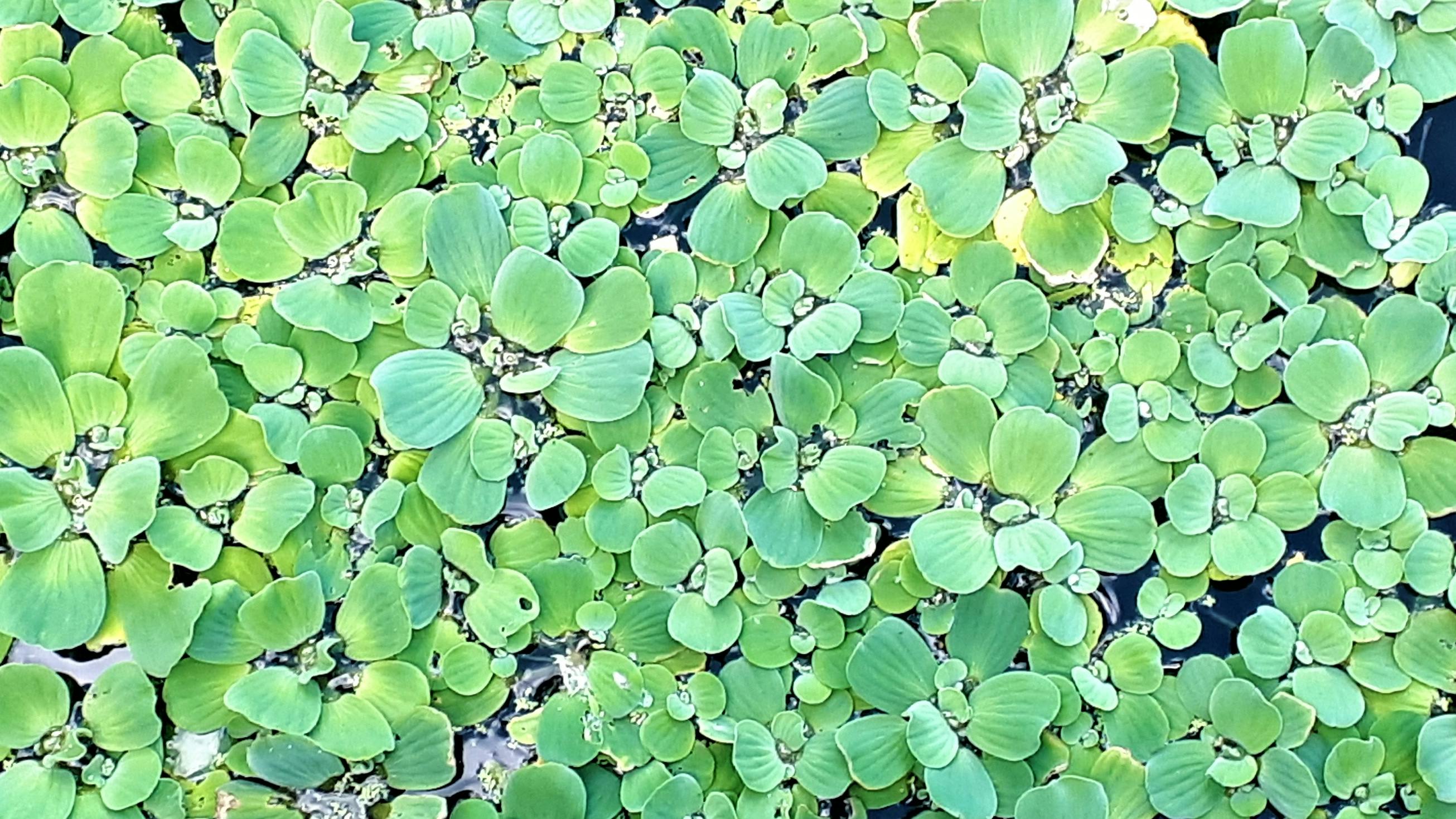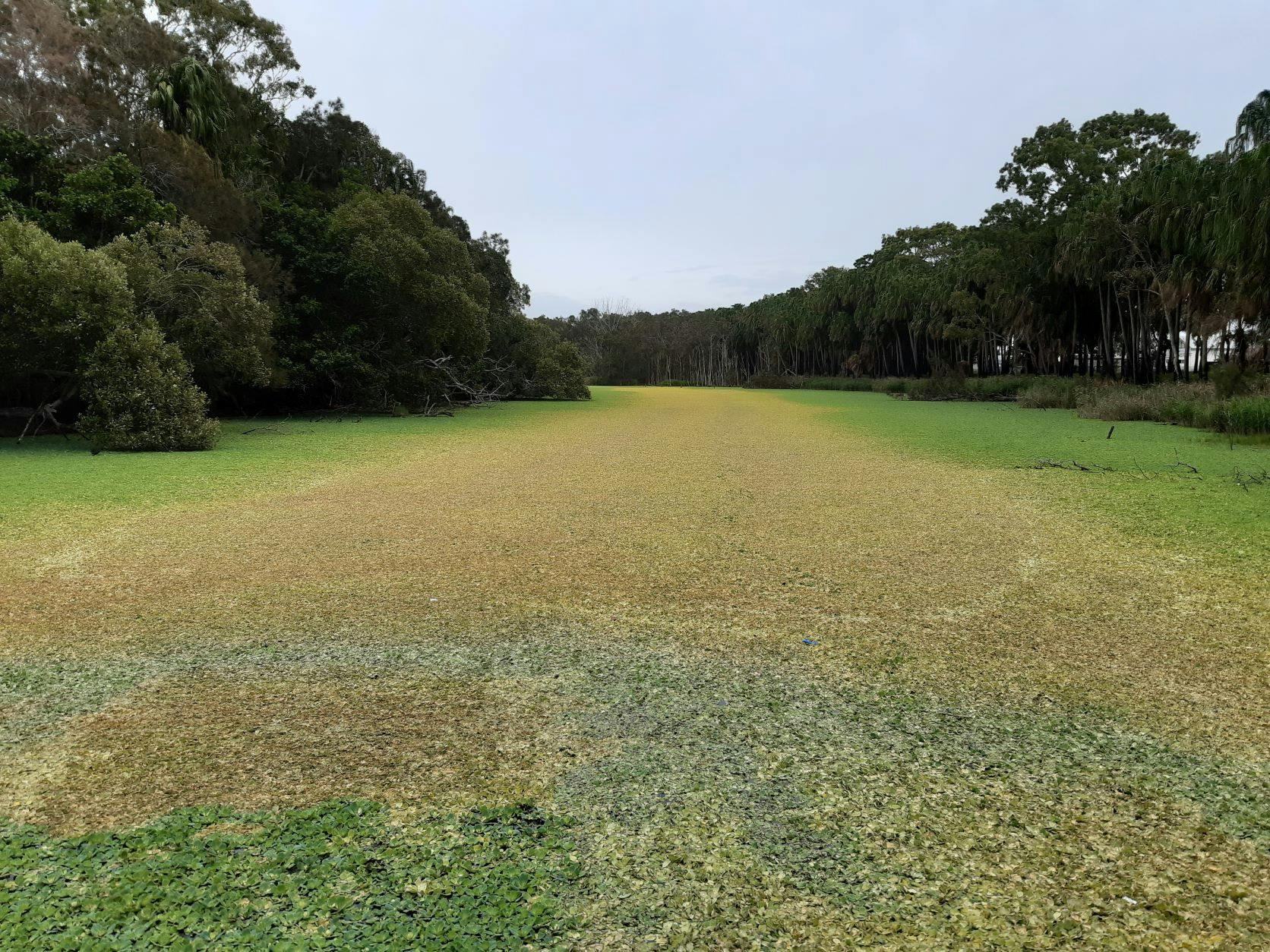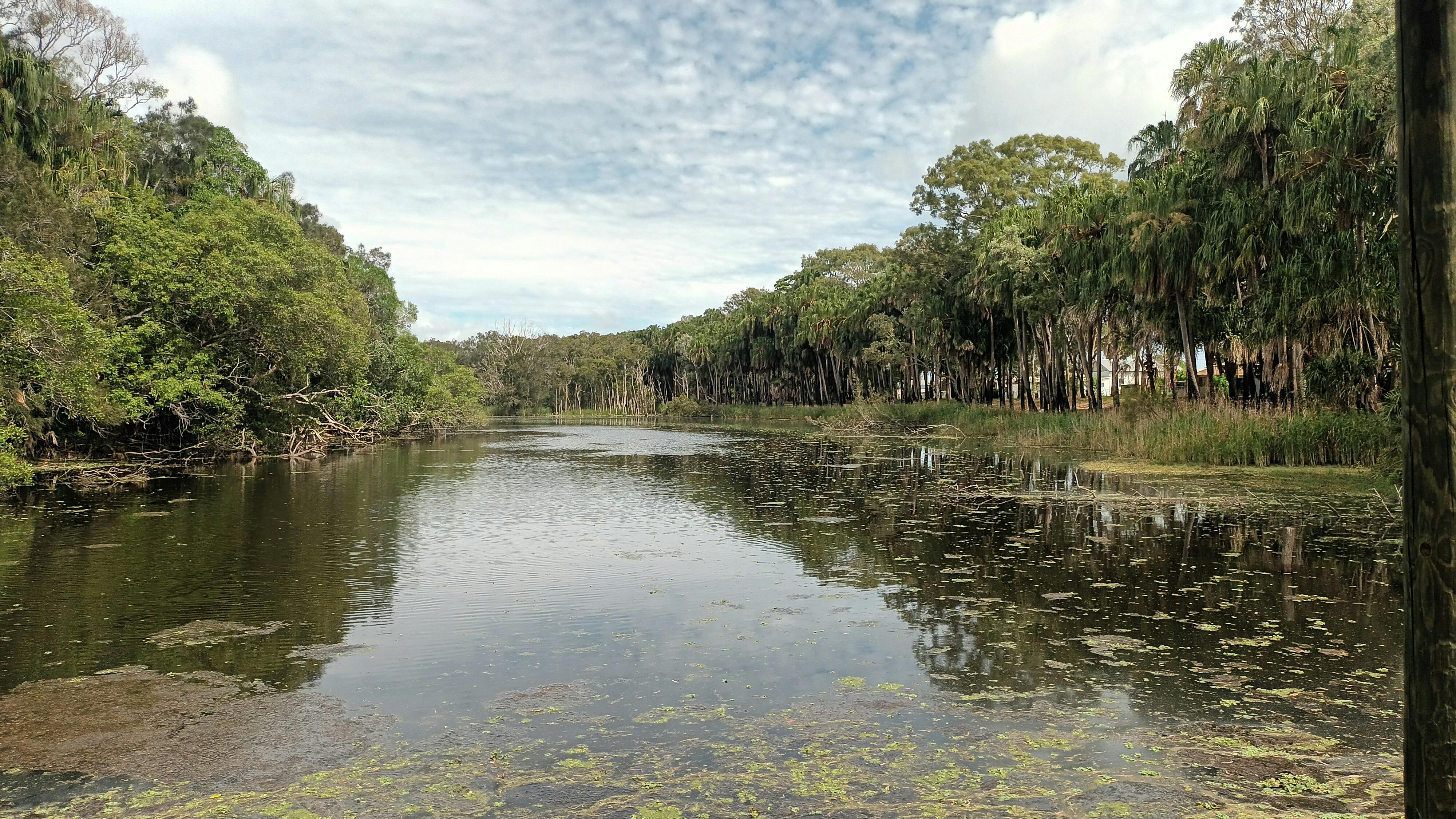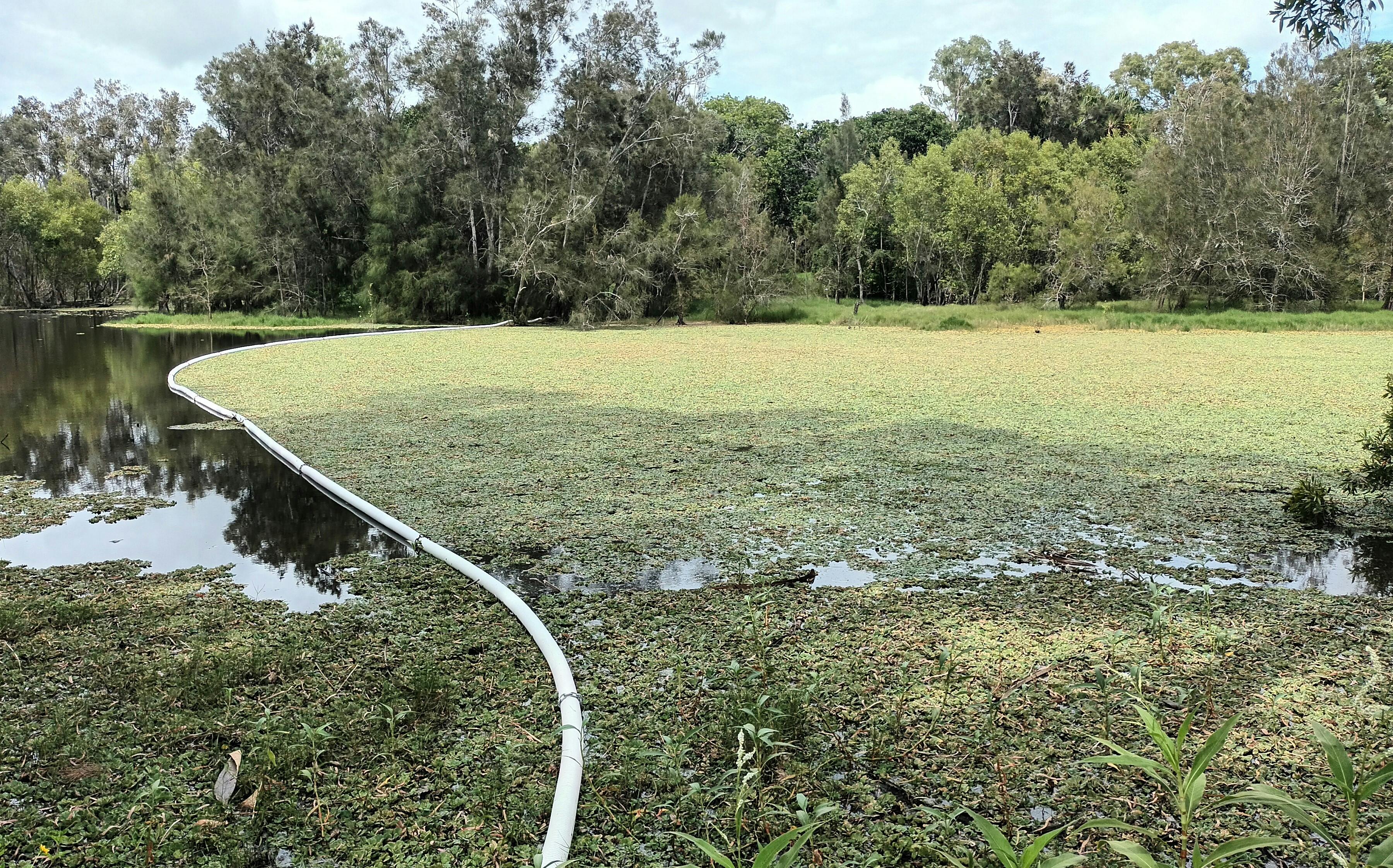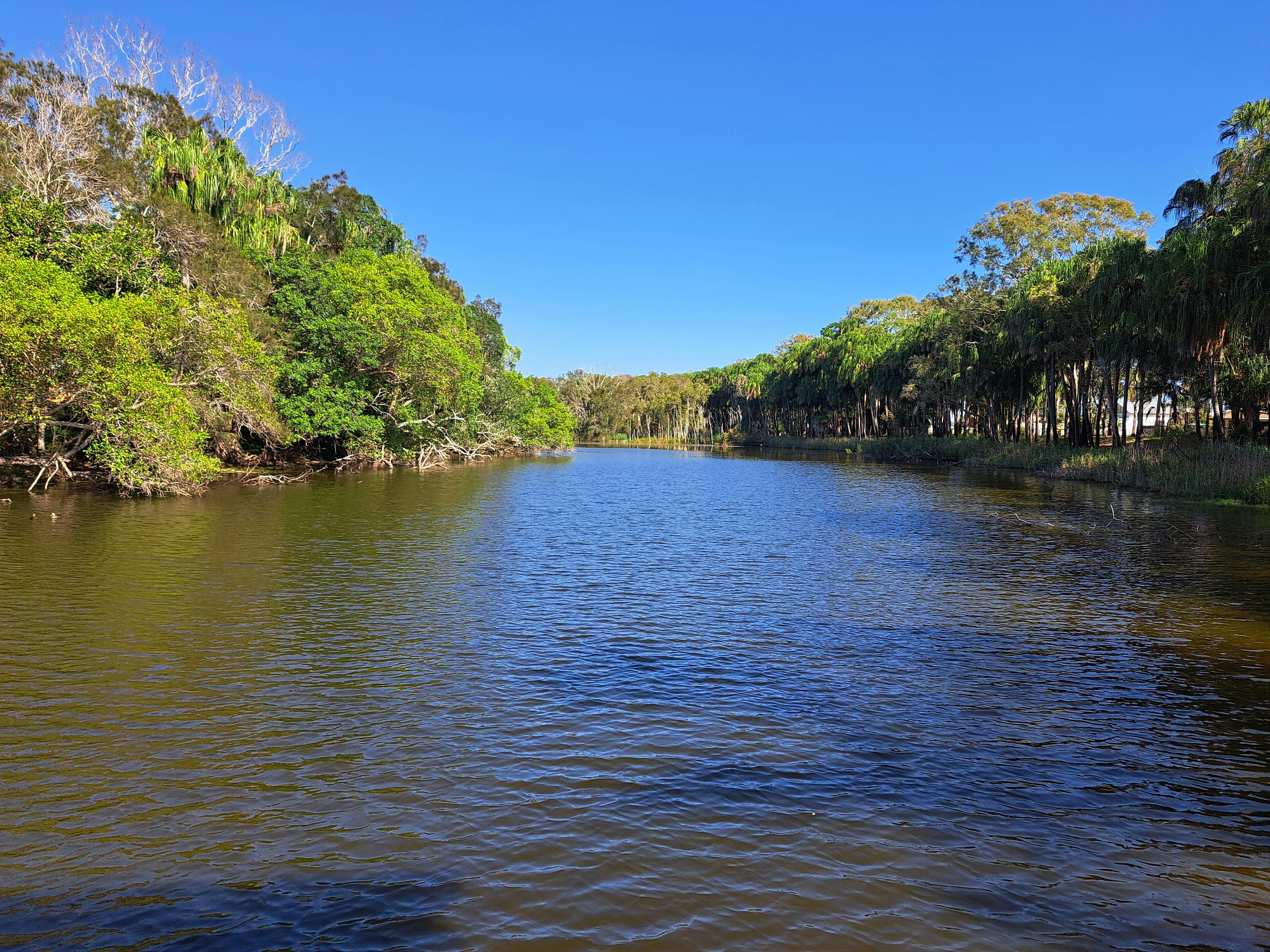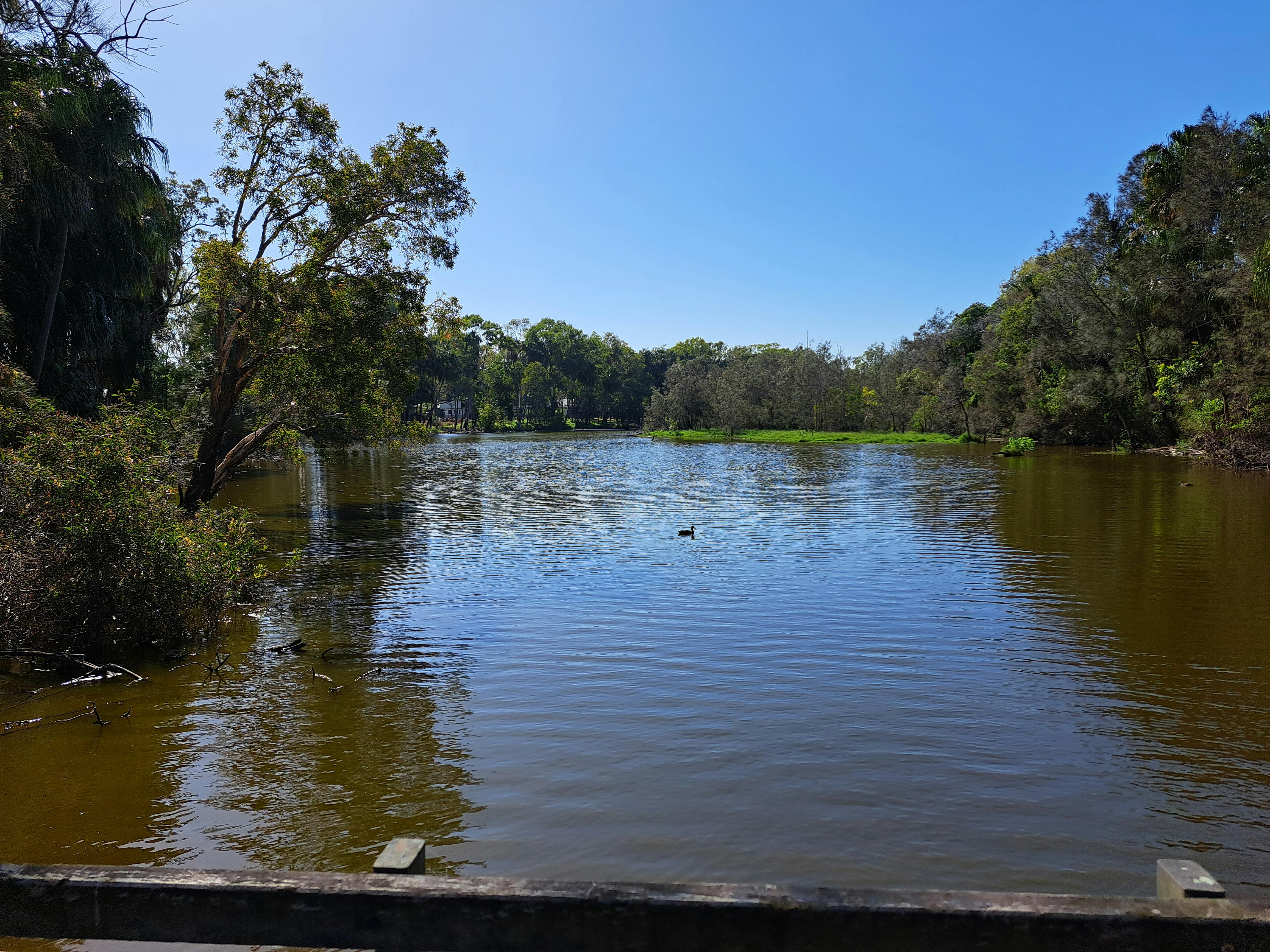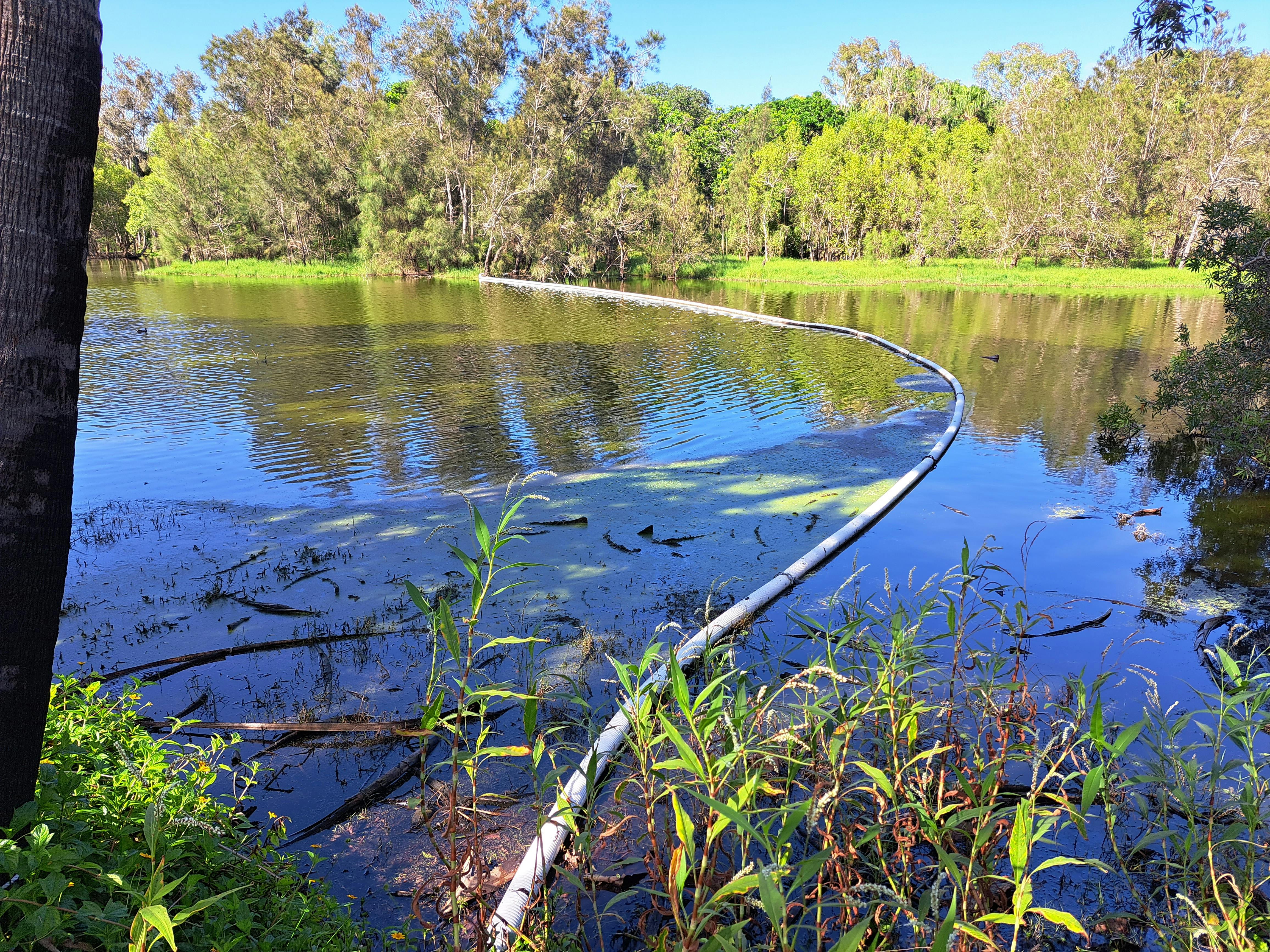Water lettuce management - Moore Park Beach Wetland Reserve
Update - September 2024
Treatment of scattered fringing water lettuce infestations with herbicide was undertaken this month at Moore Park Beach wetlands. Refer to the September 2024 map for the areas treated.
Staff also undertook maintenance of the booms which help contain the water lettuce.
Land Protection Officers will continue to monitor the area coming into the growing season.
Update - May 2024
A low-density population of Water lettuce was identified in the Moore Park Beach Wetlands in March 2024. A map of the locations, identified in blue, can be viewed here.
Council's Land Protection Officers re-instated the floating boom in March to contain the infestation to the upstream section and chemical treatment was applied in April.
Scattered fringing infestations in the southern part of the wetlands were inspected and treated where suitable.
Strategic control will be ongoing including a combination of biological control, a boom to contain larger infestation movement and chemicals, with the aim of containing the Water lettuce to small fringing areas.
Land Protection Officers will continue to monitor the lagoon.
Background
In April 2022 an outbreak of Water lettuce (Pistia stratiotes) was reported in the Moore Park Beach Wetland Reserve between Olive Drive and Ohlaf Street.
Under the Queensland Biosecurity Act 2014, water lettuce is classed as a category 3 restricted invasive plant and therefore cannot be sold, given away or released into the environment. Council is meeting its general biosecurity obligation (GBO) under the Act that requires landholders to take reasonable and practical steps to minimise the risk posed by water lettuce.
Water lettuce was introduced into Australia as an aquarium and water garden plant and is a free-floating perennial aquatic plant. As its name suggests, once fully developed it resembles a small floating open headed lettuce.
Water lettuce can rapidly form dense infestations on dams, creeks, rivers, and irrigation channels, therefore restricting flow, damaging native ecosystems and reduces the opportunity for recreational use plus reducing the oxygenation of the water, leading to a reduction in native flora and fauna.
Survey
Council’s Land Protection team undertook surveys of the wetlands to identify the extent of the infestation in April 2022. The survey showed that the water lettuce infestation was restricted to a single lagoon between Olive Street and Ohlaf Street This information was used to develop a suitable management approach incorporating permitted control methods designed to minimise environmental impacts.
A local resident advised Council that they had seen a person pouring aquarium tank water into the lagoon prior to the infestation being reported. This is an unconfirmed report, however, it highlights how easily a new infestation can occur.
Control methods
The Land Protection team adopts a best practice approach when making decisions about the most appropriate weed control method. Successful weed management involves an integrated program that may consist of mechanical, biological and chemical control methods. The use and impact of herbicides is always thoroughly investigated and undertaken in accordance with approved guidelines.
Drone spraying
A portion of the water lettuce was first treated by drone spraying in May 2022. This method was selected to not overburden the wetlands with decomposing plant matter and allowed for initial monitoring of the impact to water quality and aquatic life. Due to restricted bank access, and the high density and coverage of water lettuce, it was determined that the use of a boat was not safe or practical in the initial stages of the program.
Once the water lettuce has been sprayed it takes between 2 – 3 weeks for the treated plants to die and break down.
The herbicide used to control the water lettuce in the drone spraying is NuFarm Weedmaster Duo. This herbicide is registered for the control of water lettuce and is recommended by the Queensland Department of Agriculture and Fisheries (DAF) as detailed in Table 1 on page 4 of the DAF Water Lettuce factsheet found here on this page.
Weedmaster Duo contains an approved ‘frog friendly’ surfactant and it has full aquatic registration, making it ideal for Council use in parks and gardens and along drains, rivers and creeks.
‘Frog friendly’ refers to the fact that this surfactant is not harmful to frogs and other aquatic species which makes it most suitable for use in aquatic settings. Surfactants are wetting agents in the herbicide that act to lower the surface tension of the liquid and allow for increased spreadability onto the weeds.
Cool weather limits the absorption rate of the herbicide by water lettuce. The Land Protection team are timing control methods to achieve the most efficient outcomes.
Biological control agents
Council intends to use the water lettuce weevil (Neohydromonus affinis) as part of the treatment plan and is looking to source weevils from other Councils. Adult weevils feed on water lettuce, laying eggs in the leaves which then hatch into larvae. The larvae destroy the spongy leaf bases of the water lettuce causing the plants to lose buoyancy and die. It is expected that the weevils will be released during the summer months as they reproduce best in warmer conditions. The weevils will take time to build up in numbers to a point where they will have an impact on the plant and aid in overall management of the infestation.
Mechanical control
The use of mechanical control options such as an aquatic weed harvester machines were considered, however, they were not a practical option for this location due to limited clear bank access, shallow water and potential impacts on fish and native wildlife.
Council has installed floating booms across the lagoon at a number of locations to restrict the movement of the water lettuce back into already treated areas, and to reduce the physical area and locations where herbicide treatment is required.
Manual removal of the water lettuce with hand tools may also be required in areas of the lagoon where herbicide treatment is not possible and access is difficult.
Staged approach
A staged approach is being used to treat this infestation so the effectiveness of control methods can be monitored and to minimise the potential impacts on water quality through de-oxygenation.
The dense vegetation around the wetlands will hide some pockets of water lettuce that could re-infest the lagoon. The team continue to be vigilant of this.
Timing of treatments
Once water lettuce has been sprayed, it takes between 2 – 3 weeks for the sprayed plants to die and break down. It may also take several days for the plant to turn from green (healthy) to yellow/brown showing that it has been affected by the herbicide. Herbicide applications will continue as long as required, in order to reduce the current extent of the water lettuce and to treat any new infestations.
Boardwalk closure
Due to the safety requirements of drone operation, the boardwalk over the lagoon must be closed during spray operations. Temporary signs will be placed at either end of the boardwalk notifying the community of these closures. Please note that weather conditions including wind, rain and temperature, all impact whether a drone can be used and the absorption of the herbicide by the water lettuce, in some cases notification may only occur on the same day of drone spraying.
Odour
Residents may notice an odour during the management program. This smell is likely due to the treated plant matter decomposing after it has been treated.
Progress
Recent herbicide treatments have resulted in a significant reduction in the coverage of water lettuce in the lagoon and further follow-up treatments are planned to treat the remaining plants.
Council will continue to implement control actions for as long as needed and will review methods to adapt the program as required.
Media
A Bundaberg Now article was released by Council on the Bundaberg Now website and Facebook page on Wednesday 4 May 2022.
